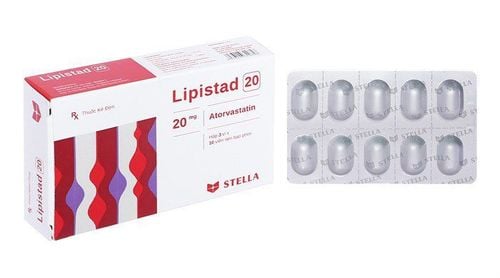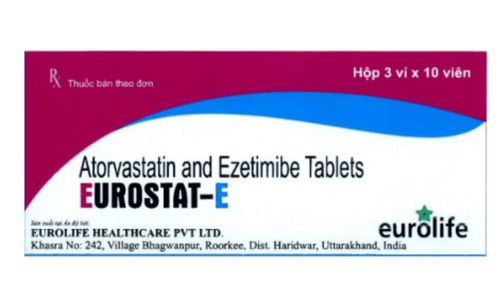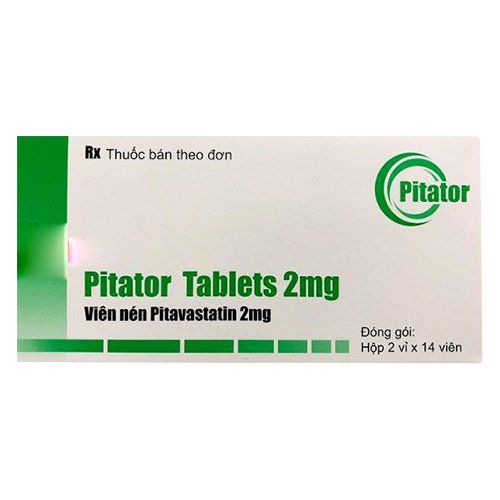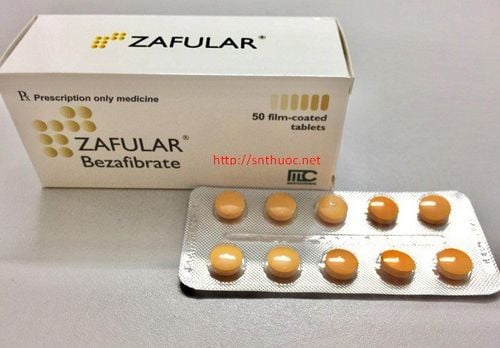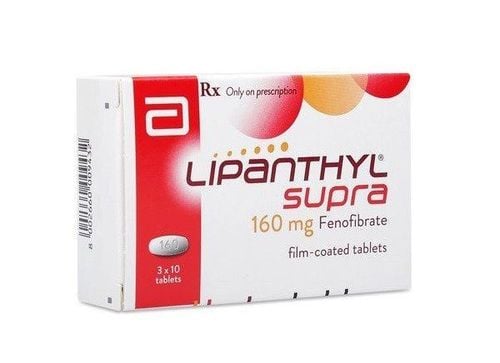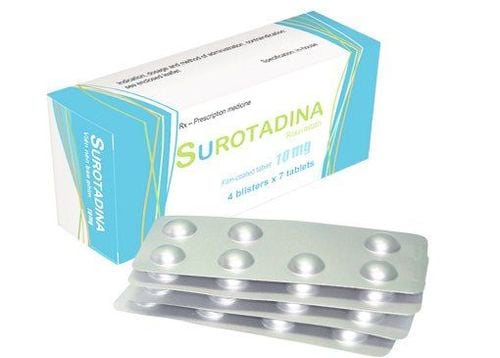This is an automatically translated article.
Becopanthyl belongs to the group of cardiovascular drugs, used to treat cases of dyslipidemia. Let's learn about Becopanthyl drug information through the article below.
1. What is Becopanthyl?
Becopanthyl brand-name drug of Fenofibrate 160mg with other excipients just enough for 1 tablet such as Lactose, microcrystallin cellulose, sodium lauryl sulfate, crospovidone, acrosil, magnesium stearate, HPMC606, HPMC615, PEG 6000, talc and titanium dioxide. Fenofibrate is a derivative of fibric acid, belonging to the group of lipid-lowering drugs. The drug has the effect of inhibiting cholesterol synthesis in the liver, reducing blood triglyceride levels, reducing atherosclerotic factors low and very low density lipoproteins (LDL, VLDL) and increasing high density lipoproteins (HDL) - weak vascular protector. Since then, the drug helps to improve the blood lipid disorder of the body.
2. Uses of Becopanthyl
Becopanthyl is used in the following cases:
Hypercholesterolemia (type IIa), hypertriglyceridemia (type IV) or hypertriglyceridemia (type IIb and III) in adults, despite dietary changes. appropriate but ineffective. Treatment of secondary hyperlipidemia that persists despite treatment of the primary disease
3. Dosage and how to use Becopanthyl
Dosage depends on age:
Adults: 1 tablet/time/day. Children > 10 years: Up to 5mg/kg/day. Take the medication under the direction of your doctor. How to use:
When using the drug, it must still be combined with a lipid-restricted diet Take the drug with a meal
4. Contraindications of Becopanthyl
Do not use Becopanthyl in the following cases:
People who are allergic to any of the ingredients in the drug. Severe kidney failure. People with liver dysfunction or gallbladder disease. Pregnant or lactating women. Children under 10 years old.
5. Becopanthyl side effects
When using Becopanthyl, patients may experience some unwanted effects as follows:
Digestive disorders: Abdominal bloating, nausea/vomiting and diarrhea; Rash and urticaria on the skin; Increase liver enzymes ; Muscle pain. When using Becopanthyl, if you experience any serious unwanted effects, please stop using it and contact your treating doctor or immediately go to a medical facility for timely treatment.
6. Interaction with Becopanthyl
When used in combination, Becopanthyl can interact with some of the following drugs:
Fenofibrate increases the effect of anticoagulants, thereby increasing the risk of bleeding. Therefore, it is necessary to closely monitor the coagulation parameters to adjust the anticoagulant dose when necessary. Combining cyclosporins with fibrates increases the risk of muscle damage. Concomitant use of statins (Pravastatin, simvastatin, fluvastatin) significantly increases the risk of muscle damage (creased creatine kinase, myoglobinuria, rhabdomyolysis) and acute pancreatitis. Do not use in combination with hepatotoxic drugs such as Perhexiline malcat and MAO inhibitors.
7. Notes and cautions when using Becopanthyl
When using Becopanthy, the patient should be careful in the following cases:
It is necessary to check the patient's liver and kidney function before starting treatment with fibrate. During the first 12 months of taking the drug, liver enzymes should be tested every 3 months, stop taking the drug if SGPT (ALT) > 100IU/L. Hypothyroidism may be a factor that increases the likelihood of muscle side effects. When combined with anticoagulants, it is necessary to closely monitor the coagulation test parameters and adjust the drug dose when necessary. If, after 3-6 months of treatment, there is no significant change in blood lipid levels, other alternative or complementary therapies must be considered. In addition to the above information, if you have any questions about Becopanthyl, you can contact your treating doctor for advice and answers.
Please dial HOTLINE for more information or register for an appointment HERE. Download MyVinmec app to make appointments faster and to manage your bookings easily.




